2007 Ducati Gt1000 Review
When Ducati unveiled its three retro Sport Classics at the Long Beach, California, motorcycle show in 2004, naturally its emphasis was on the two that would be ready soonest and of which the line's designer, Pierre Terblanche, was most proud.
In fine Ducati sporting tradition, the Paul Smart 1000LE's and Sport 1000's café-racer styling with low clip-on bars, solo seat tailsections and stacked mufflers made them the darlings of the SportClassic trio. I could hardly get Terblanche to talk about the Sport Classic GT1000, in fact, which was still in prototype form and rather lonely off at stage left, its metallic gray paint subdued compared to the snappy silver/sea green and burnt yellow finishes on the Paul Smart and Sport.
All three bikes share the same 1000 DS L-twin engine, so to my eye, the higher handlebars, cushier dual seat and lower price of the GT1000 were immediate attractions. This seemed like an everyday kind of classic-looking motorcycle, one upon which you could commute and sport tour, but one that quietly concealed the soul of a Ducati sport twin complete with the rapid, booming po-tey-to po-tah-to exhaust note that identifies the powerful liter-class Italian twin from blocks away. I wanted one, right then and there. And now that I've ridden one extensively, I want one even more.
Advertisement
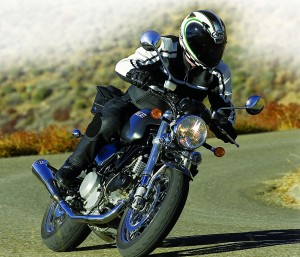
Two things push this attraction over the top: the wet clutch, which eliminates the dry, jangly rattle so many find a required characteristic of Ducatis but gives me lockjaw; and the GT's styling, a lovely, modern interpretation of the classic lines of the Ducati GTs of the 1970s. The knee cutouts in the fuel tank, for example, are like sculpture and allow a comfortable yet secure riding position. Details like the small vented side covers and highly polished aluminum front fender braces, top triple clamp and handlebar mounts are simply elegant. I've always been a fan of chrome when it glistens where it belongs and is easy to care for, as on the GT's laced wheels, handlebar and double-walled exhaust pipes with twin silencers. Finally, the bike's GT Gray color is actually an ephemeral mix of gray, green and bronze metallic that shifts beautifully in the changing sunlight.
OK, the GT's spoked wheels carry tubes, the desmo heads require skilled adjustment and the cam belts need replacing on occasion. Get over it. Here is a bike that turns heads and carries you back to the '70s-complete with a disco beat-but doesn't have breaker points, anti-stop brakes or suspension by the Marquis de Sade. It's unchanged for 2007, too.
Much to our surprise our 2006 GT1000 test bike came equipped with Ducati's accessory Termignoni silencer kit, which includes a pair of throatier mufflers, a different chip for the bike's electronic control module and a freer-flowing airbox cover. The kit is EU3 approved for road use abroad, which should make it 49-state legal as well, but Ducati couldn't confirm this. In addition, some miscreant had removed the baffles from ours before delivery on a tight deadline, making them technically illegal for road use anywhere except certain parts of the Sahara. Despite the loudness I must say it does sound like Anna Kournikova ripping her velvet dress in all the right places, though the kit may also have resulted in slightly higher dyno figures than stock. Ducati USA doesn't have any info in this regard, either.
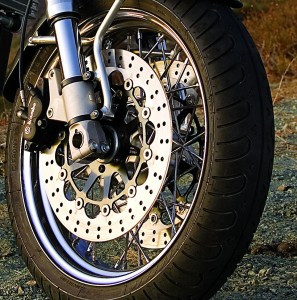
Fast-idle control is automated on the GT1000-fire it up and the bike races a bit until it's warmed up but then settles into a tom-tom idle with quick-revving throttle response.
I guess its retro appearance had me expecting leisurely acceleration, so I was shocked when a quick twist of the throttle made the bike leap like a whipped thoroughbred. On the Borla Performance dyno the GT1000 made a respectable 79.9 horsepower and 62.1 lb-ft of torque at the rear wheel, but the bike's light 454-pound wet weight lets it move like a more powerful machine. Even two-up you'll never wish for more power, though way down in the powerband-under about 3,500 rpm-as with most Ducs you may want for smoother acceleration, as the GT judders and shakes until the tach needle climbs a bit higher. From there the machine is as smooth as you could want a twin, with only a slight amount of buzziness blurring the mirrors at certain rpm. The twin-plug 1000 DS engine was originally introduced in the Multistrada and is Ducati's best two-valve effort yet, with ample midrange, screaming top end and fluid throttle response thanks to the Magnetti-Marelli EFI and ignition. Valve adjustment is simpler and costs less than on the four-valve models, and last year Ducati doubled the serv- ice intervals (including cam belt replacement) on all of its bikes.
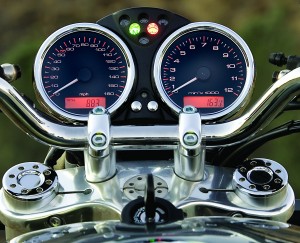
Shifting the GT1000 is a dream, if only because the wet clutch is so much nicer to use than the dry version on many of the GT's siblings, with a broad engagement range and lower lever effort. The six-speed transmission snicks easily and quietly though the gears, too.
Looking at the GT1000 side-on, all of the air under the rear fender gives it an odd look, a result perhaps of '70s lines with a modern low-profile radial and smaller 17-inch wheel. Removing the thick seat makes the bike look less as though it's standing on its nose, but it's that same thick padding that provides ample comfort for rider and passenger. The narrowness of the seat in front also makes it fairly easy to get your feet down at stops. The wide handlebar feels natural and comfortable for most riders, with a slight forward lean, and with no windscreen to break up the flow (or create any buffeting) the rider settles into a neutral position at speed that makes long rides a pleasure.
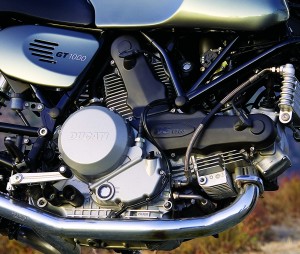
That 43mm Marzocchi male-slider fork up front is typical for an Italian unit with no adjustments, erring on the side of stiffness in spring rate and damping and thus having a harsh ride anywhere the road is less than smooth. The Sachs shocks in the rear are beautiful and elegantly conceal their spring preload adjusters, but suffer from too much compression damping as well. Both front and rear suspension work wonderfully, of course, when the road twists, turns, rises and dives, but throw in some bumps and the bar and seat beat on the rider mercilessly. Our washboard freeways around Southern California are simply no fun at all, though the bike's wide handlebar, ample cornering clearance and that same firm suspension will make you want to take backroads full-time anyway.
Brembo provides the GT's stopping power, a nice mix of strong, linear power at the lever in front and typical Ducati woodeness-which makes it hard to lock the rear wheel-at the rear pedal. Interestingly, two-piston pin-slide calipers that slide outward were needed in front to clear the spokes. Tires are an excellent choice with good looks, Michelin Pilot Classics with well-rounded profiles that don't fall in too quickly and work well with the bike's quick steering.
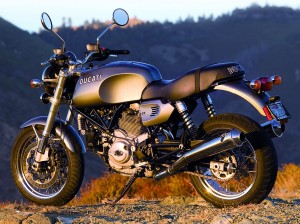
Pop off the GT1000's locking seat and inside it you'll find a rudimentary toolkit with a loop of wire for securing helmets to a post under the seat. The bike accepts all forms of luggage-tankbags, seatbags, saddlebags-easily and quickly thanks to its flat-topped fuel tank and dual shocks. Brake and clutch levers adjust and have remote hydraulic reservoirs, the mirrors are old-timey big and clear and instruments simple and effective, though we'd like the twin LCD displays with trip odometers, clock and temp gauge to be brighter in the daylight. Figures it's the one item of newfangled electronic gadgetry on this bike that fails to perform well.
Everything on the GT1000 is modern but classic looking, exposed, making it all part of the bike's classic styling, with just two small covers to hide its elemental simplicity. What you see is what you get with the GT1000, and what you get is damn nice. The only thing to agonize about is red or gray.
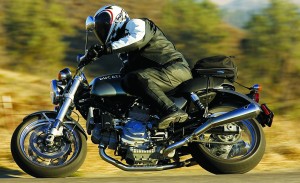
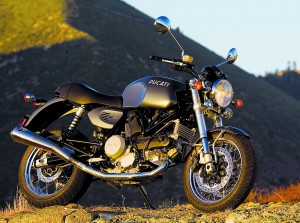
Advertisement
Source: https://ridermagazine.com/2007/01/05/2006-ducati-sport-classic-gt1000-road-test/

Tidak ada komentar: